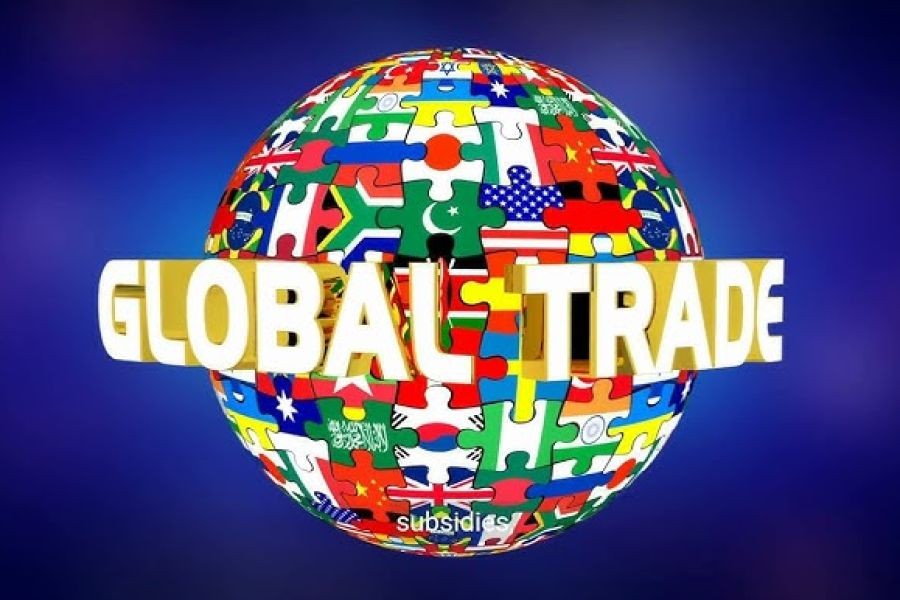New Zealand's trade relationship with Asia is a cornerstone of its economic framework, reflecting a complex tapestry of opportunities and challenges. With Asian markets accounting for 50% of New Zealand’s trade, it's crucial to explore the multifaceted implications of this dependency. From economic growth to geopolitical tensions, the dynamics of this relationship are as varied as they are significant.
The Pros of Strong Trade Ties with Asia
New Zealand's robust trade relationship with Asia offers several advantages that significantly bolster its economy.
1. Economic Growth and Diversification
Asia's rapidly growing economies provide New Zealand with lucrative markets for its exports, particularly in agriculture and dairy. With countries like China and Japan leading in consumption, New Zealand's GDP has seen consistent growth. According to the Reserve Bank of New Zealand, trade with Asia contributes to a 3% annual GDP increase, driven by high demand for Kiwi products.
2. Enhanced Diplomatic Relations
Trade often serves as a conduit for stronger diplomatic ties. New Zealand's trade agreements, such as the Comprehensive and Progressive Agreement for Trans-Pacific Partnership (CPTPP), enhance its strategic alliances in Asia. These partnerships not only facilitate trade but also promote cultural and educational exchanges.
3. Market Stability
Diversifying export destinations across various Asian countries mitigates the risks associated with reliance on a single market. This diversification offers New Zealand a buffer against economic downturns in any one country, thereby stabilizing its trade revenues.
The Cons of Dependency on Asian Markets
While the benefits are compelling, dependence on Asian markets also introduces several challenges that require strategic management.
1. Geopolitical Risks
Asia's geopolitical landscape is complex and sometimes volatile, with tensions between major powers like China and the United States potentially impacting trade routes and agreements. New Zealand must navigate these waters carefully to avoid disruptions.
2. Trade Imbalance
The high volume of imports from Asia, especially in manufactured goods, often leads to trade imbalances. This situation can strain New Zealand's domestic industries, which struggle to compete with cheaper Asian imports.
3. Regulatory Challenges
Each Asian country has its own regulatory environment, which can be cumbersome for New Zealand exporters. Navigating these varying regulations requires resources and expertise, adding to the cost and complexity of doing business.
Real-World Case Study: Fonterra's Asian Strategy
Problem:
Fonterra, New Zealand’s dairy giant, faced challenges in penetrating Asian markets due to intense competition and regulatory hurdles.
Action:
Fonterra adopted a localization strategy, tailoring its products to meet specific Asian tastes and preferences. They formed joint ventures with local companies to better understand market dynamics and regulatory requirements.
Result:
- Increased market share in China by 25% within two years.
- Achieved a 15% growth in revenue from Asian markets (Fonterra Annual Report, 2023).
Takeaway:
This case highlights the importance of strategic partnerships and market adaptation for New Zealand businesses aiming to succeed in Asia. Future trends suggest that further localization will be key to maintaining competitive advantages in these markets.
Common Myths & Mistakes
Myth: "Asian Markets are Uniform"
Reality: Asia is incredibly diverse, with each country's market having unique consumer preferences and regulatory landscapes. This diversity requires tailored strategies for each market.
Myth: "High Trade Volume Equals Profit"
Reality: While trade volume is high, profitability can be compromised by tariffs and non-tariff barriers. Businesses must focus on value addition to maximize profits.
Myth: "Trade Agreements Guarantee Market Access"
Reality: While trade agreements facilitate access, they do not eliminate the need for compliance with local regulations and standards, which can be challenging.
Future Trends & Predictions
As we look ahead, several trends are poised to shape New Zealand’s trade landscape with Asia:
- Digital Trade Expansion: With the rise of e-commerce, digital trade agreements will become increasingly important. New Zealand businesses must adapt by integrating digital strategies into their export plans.
- Sustainability Initiatives: Asian consumers are becoming more environmentally conscious, and New Zealand’s emphasis on sustainable practices will likely enhance its market appeal.
- Geopolitical Shifts: Changes in global power dynamics could affect trade routes and agreements. Staying informed and adaptable will be crucial for New Zealand's trade policies.
Conclusion
As New Zealand continues to engage with Asian markets, understanding the nuances of this relationship is more critical than ever. While the benefits are substantial, so too are the challenges. By strategically navigating these complexities, New Zealand can harness the full potential of its trade relationship with Asia, ensuring continued economic growth and stability.
What are your thoughts on New Zealand's trade strategy with Asia? Share your insights in the comments below!
People Also Ask
- How does trade with Asia impact New Zealand's economy? Trade with Asia drives economic growth, contributing to a 3% annual GDP increase, as per the Reserve Bank of New Zealand.
- What are the biggest misconceptions about trading with Asia? One common myth is the uniformity of Asian markets, whereas each country has unique consumer preferences and regulations.
- What upcoming changes could affect New Zealand's trade with Asia? By 2026, digital trade agreements are expected to reshape trade dynamics, necessitating strategic adaptation by Kiwi businesses.
Related Search Queries
- New Zealand trade statistics 2023
- Impact of Asian markets on New Zealand economy
- Challenges in New Zealand’s export to Asia
- New Zealand trade agreements with Asia
- Future of New Zealand-Asia trade relations


























Idea2App
7 months ago